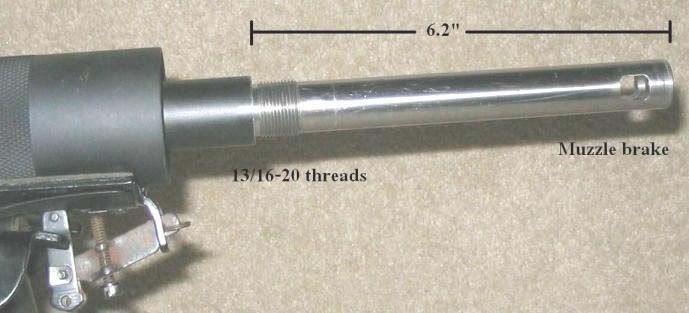Re: Reflex cans... Pros and cons ???
Mark raises some important points. First, condensation can occur. But, having said that, the rust is found as barrel pitting. Titanium/Stainless cans will not suffer from condensation that can be found by rapid firing and then racking the weapons barrel up.
On the subject of the 16th and backpressure and blow back and old (2007) review. P.S. an unsurpressed .22 result is ok for the hard to supress .223. Frequency shifting technology does much better, in other words MUCH quieter than an unsupressed .22.
"Shooting on an open firing line with a single berm downrange, the 16th Model sounded much like an unsuppressed .22LR rifle. It was quiet enough that you could hear the bullet impact the berm (this may have also been bullet flight noise reflecting off the berm) from the 100yd targets. Shooting on an enclosed tactical range with a U-shaped berm, the experience was a little different. You could hear the bullet flight noise reflected off the berms as the round traveled downrange giving it a kind of zip/whoosh sound that reminded me of air tools in a garage. The sound there was noticeably louder; but sounded less like a gunshot. We were sharing the range with a great group of people with an Anschutz .22LR target rifle. Here the unsuppressed .22LR was definitely quieter.
The final issue I’ll discuss is gas blowback and heat. For those who haven’t shot suppressed weapons before, the way they work is by delaying the escape of hot, supersonic gases until they can cool. The cooler gases do not create the supersonic crack at the muzzle. One side effect of this is increased backpressure in the system that causes gas to escape from the ejection port, charging handle and almost any other place it can get out. Another side effect on direct-gas impingement rifles like AR15s is that the bolt cycles much faster than it normally does due to the increased pressure and dwell times.
Here I used a Gasbuster charging handle to reduce the amount of gas in the face. For the first 10 rounds from the nice clean suppressor, I didn’t notice any gas at all. After we got it nice and carboned up though, you would occasionally get the shot of gas in the eyes despite the Gasbuster. We were outdoors so the eyes didn’t tear up too much; but most people would probably find it unpleasant. It was kicking quite a bit of gas out of the ejection port as well, so I can’t say that the charging handle was the only source. How much gas blowback you get seems to depend on rate of fire, heat, and whether you use lubricant in the suppressor to further dampen the sound of the first 1-5 rounds. Just target shooting with it, I rarely have an issue with gas blowback. When I am dumping 10-15 rounds into a target as fast as I can pull the trigger, more noticeable. Also adding lubricant (2-3 drops) into the suppressor appears to increase blowback.
One more aspect of the backpressure, the increased backpressure also means a much dirtier weapon. The lube dries off the internal parts quicker since it is essentially getting the "blow dry" treatment from increased heat and backpressure and more carbon is blown into the chamber as well.
On bolt velocity, I will probably need to run a heavier buffer. Right now I have only a standard carbine buffer and a very heavy MGI buffer (7oz). The rifle will not run reliably unsuppressed with .223 loads with the MGI Buffer due to the midlength gas system that reduces gas pressure. Suppressed it runs reliably with both the standard carbine buffer and the MGI buffer; but it is really slamming that bolt carrier group with the standard carbine buffer. Normal ejection for this rifle is about 3:30-4 o’clock. With the suppressor installed, it is ejecting at 12:30-1 o’clock and some of my older mags no longer work because they can’t push rounds into place fast enough."
Lastly.....
11" (eleven inches) .308 barrelled and suppressed target just hit my desk with a .452 group at 100 yards.
Much quieter than a .22





